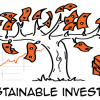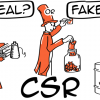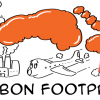Script
Social sustainability: Script
What human needs do we have satisfy to live a sustainable life? Interestingly enough, most definitions of sustainability mention meeting needs. The Brundtland commission of the United Nations in 1987 defined sustainable development as “development that meets the needs of the present without compromising the ability of future generations to meet their own needs.” In a previous video, we used natural science to see that sustainability can be defined as meeting human needs within ecological constraints. And one of our 4 sustainability principles says “in a sustainable society, people are not subject to conditions that systematically undermine their capacity to meet their needs.” So what are these needs? And how can they help us become sustainable?
You may be familiar with Maslow’s hierarchy of needs. I won’t get into it here but there are many resources available online if you are interested. But here is another interesting theory about human needs developed by Chilean economist Manfred Max-Neef. He published in 1991 a book called “Human scale development” demonstrating that human needs are finite and classifiable; there are 9 fundamental human needs that are constant through all human cultures and across historical time periods; and what changes is the ways these needs are satisfied.
These 9 human needs are: subsistence (we need food, water, shelter), protection (a safe place to live, social security), participation (being part of decisions that affect our life), idleness (some free time, relaxing), affection (we need friends, love), understanding (learning, meditating), creation (cooking, designing, inventing), identity (a sense of belonging, knowing oneself) and freedom (being able to choose how we live our lives).
Although these needs are the same than the romans or the native people used to have thousands of years ago, some of the ways we satisfy our need for protection, participation or freedom can be very different today than they were then. While some satisfiers satisfy only one need (for example insurance provides us with protection), some satisfy several at once (for instance breast feeding satisfy a baby’s needs for subsistence but also protection, affection and identity). These are called synergistic satisfiers. Max-Neef also differentiates other types of satisfiers called destroyers: by supposedly satisfying a need, they stop us from meeting several others (for example censorship pretends to satisfy our need for protection but it actually stops us from meeting our needs for Understanding, Participation, Creation, Identity and Freedom). Some are pseudo-satisfiers: for example, fashion and trends can generate a false sense of identity. Max-Neef also organized satisfiers in 4 categories: being, having, doing and interacting depending on how we satisfy our needs.
How is this helpful to become sustainable? First, when working toward reducing and eventually eliminating our contribution to conditions that systematically undermine people’s ability to meet their basic needs worldwide, we now have a framework to organize our thinking. We can scrutinize our activities, products and services through the lens of these 9 human needs and associated satisfiers, pseudo-satisfiers and destroyers. Secondly, when looking for ways to improve or replace an unsustainable practice, we can step back and take a different perspective: why is this product here in the first place? Which needs does it satisfy? Can we satisfy these needs as well, or even better, with a different product or service? For example, a music festival gathers tens of thousands of people who join to meet their needs for participation, idleness, creation and identity. Can we invent a totally different way to meet the same needs with less carbon emission due to transportation and less impact on the local ecosystems? Just asking the question opens a whole new way of thinking. Can we invent new ways to satisfy our needs for identity and freedom that do not require buying and consuming so much stuff? Can we imagine other ways to satisfy our need for idleness that do not require flying half-way around the world and intrude on other people’s culture and land? When we find a sustainable satisfier, can we improve it to make it a synergistic satisfier and meet several needs at once with the same amount of resources?
At the end of the day, being sustainable is about being able to meet our needs within our ecological constraints and Manfred Max-Neef’s human needs can be very useful to find ways to satisfy needs using fewer resources. They provide a new lens and help us take another look at the system we are trying to change, which is crucial to stimulate innovation and to avoid superficial problem solving. If you are interested in reading more about this, the book “Human scale development” is available as a free PDF online, the link is in the description below.






